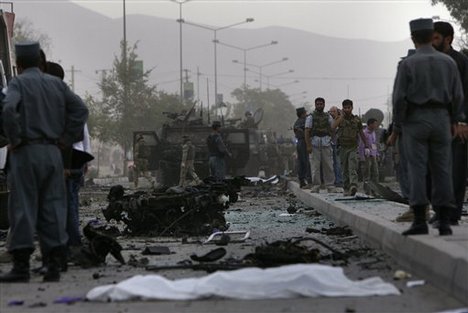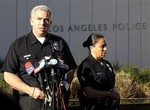- published: 16 Sep 2014
- views: 44
Published on Sep 16, 2014 NASA's Hunt for Dangerous Asteroids Falls Short | BREAKING NEWS - 16 SEPTEMBER 2014 For more Latest and Breaking News Headline SUBSCRIBE: - https://www.youtube.com/user/BBCWorldNews1000 NASA won't meet a congressionally ordered goal to find 90 percent of nearby and potentially dangerous asteroids larger than 460 feet (140 metres) in diameter, the agency's Inspector General said on Monday. The shortfall comes despite a 10-fold increase in NASA's annual budget over the past five years - from $4 million in 2009 to $40 million in 2014 - to track and assess potentially dangerous asteroids and comets. So-called "Near-Earth Objects," or NEOs, fly within about 28 million miles (45 million km) of Earth. The agency's efforts are poorly coordinated, ill-managed and under-staffed, according to a 32-page report titled "NASA's Efforts to Identify Near-Earth Objects and Mitigate Hazards," by NASA Inspector General Paul Martin. "NASA estimates that it has identified only about 10 percent of all asteroids 140 metres and larger," Martin wrote. "Given its current pace and resources, (NASA) has stated that it will not meet the goal of identifying 90 percent of such objects by 2020." RELATED Major Hurricane Threatens Mexico Pacific Resorts Powerful Hurricane Odile Buffets Mexico's Baja, Thousands Evacuated A one-person office manages a "loosely structured conglomerate of research activities that are not well integrated and (which) lack overarching programme oversight, objectives and established milestones to track progress," the report said. NASA has found about 95 percent of the largest and potentially most destructive asteroids, those measuring about 0.62 mile (1 km) or larger in diameter. About 66 million years ago, a 6.2-mile (10-km) -wide object hit what is now Mexico's Yucatan peninsula, triggering global climate changes that are believed to have led to the demise of the dinosaurs and most other species alive at that time. More recently, a fragment of an asteroid estimated to be just 59 feet (18 metres) in diameter exploded over Chelyabinsk, Russia. The force of the Feb. 15, 2013, explosion matched the energy released in 30 atomic bombs, blowing out windows and destroying buildings. More than 1,000 people were injured by flying debris. TAGS abc breaking news, bbc, bbc football, bbc iplayer, bbc news, bbc news america, bbc persian, bbc sport, bbc weather, bbc world news, breaking celebrity news, breaking election news, breaking late news, breaking local news, breaking music news, breaking news, breaking news alerts, breaking news canada, breaking news headlines, breaking news in atlanta, breaking news in nigeria, breaking news india, breaking news pensacola florida, breaking news plane crash, breaking news story, breaking sports news, business expensive news home media world, christian world news, cnn, cnn breaking news, cnn money, cnn news, cnn news breaking news, cnn news world, detroit breaking news, global news, headline, headline news, health care technology news, hot latest global news, internet technology news, las vegas breaking news, latest breaking news, latest celebrity news, latest information technology news, latest music news, latest news, latest news headlines, latest news update, latest sports news, live breaking news, local breaking news, local news today, msn breaking news, nbc breaking news, nbc world news, news of the world, news report us world, news today news, news updated daily, solar technology news, sports news today, technology news, the latest news, today news, us news and world, us news and world report, us news and world report magazine, us news and world report web site, us news world report, world news, world news daily, world news headlines


















































































































